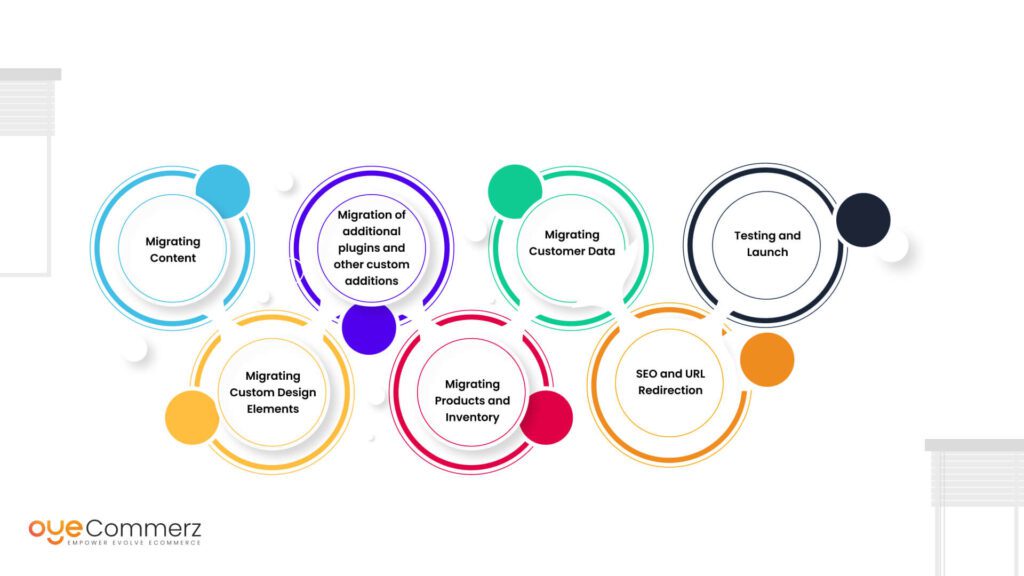In the ever-evolving world of online retail, picking the right system is vital for your brand’s prosperity. If you’re currently using WordPress and considering a migration to an alternative, you’re not by yourself. Numerous businesses are making this transition to leverage Shopify’s comprehensive capabilities, user-friendliness, and scalability. This guide will walk you through the journey of migrating from WordPress to this platform smoothly, ensuring that you achieve your eCommerce potential.
Why Migrate from WordPress to this platform?
Before exploring the migration process, it’s crucial to know why this shift can be advantageous for your digital storefront:
User-Friendly Interface: Shopify features an user-friendly interface that simplifies store handling, making it easier for non-technical users.
Flexibility: As your brand develops, Shopify can accommodate greater visitors and transactions without compromising efficiency.
Built-in Tools: Shopify provides pre-installed tools for SEO, analytics, payment processing, and much more, minimizing the requirement for numerous plugins.
Enhanced Security: With Shopify, you benefit from robust security features that secure critical customer details.
Steps for a Seamless Migration
Migrating your online store from WordPress to Shopify requires key phases.
Here’s the way to facilitate a smooth transition:
Prepare Your Migration Approach
Kick-off by drafting your migration plan. Pinpoint which aspects of your current site you plan to move, such as:
Product data
Client data
Purchase logs
Posts
Choose the Right Migration Package
Based on your needs, select a migration plan that aligns with your eCommerce goals. OyeCommerz delivers various choices:
Entry-Level Plan: Ideal for small stores with minimal products.
Standard Migration Package: Appropriate for growing businesses with more complex needs.
Premium Migration Package: Perfect for larger stores demanding custom customization.
Save Your Data
Before initiating the migration, make sure that you have a full backup of your WP site. This step is essential in the event anything goes wrong during the transfer.
Extract Your Data from WP
Utilize tools or manual methods to extract tips for a smooth Shopify migration essential content from your WP site:
Products
Users
Transactions
Blog posts
Upload Information into Shopify
After you have your data retrieved, employ Shopify’s migration apps or specialized apps to upload your information into your new store. Verify that all content is properly structured and aligned.
Personalize Your Shopify Site
Following migrating data, tailor your Shopify site’s design to align with your business goals. Look into hiring a developer if you need advanced customization.
Configure Payment Gateways and Logistics
Arrange transaction methods and logistics options in Shopify to ensure a seamless transaction experience for customers.
Implement SEO Best Practices
To maintain your online visibility during the change:
Set up 301 link updates from existing URLs to new ones.
Revise metadata.
Adjust media and copy for SEO.
Review Your Migrated Shop
Prior to going live, extensively check your Shopify store. Identify any broken links, transaction errors, or WordPress to Shopify with OyeCommerz untransferred content.
Publish Your Store
When everything is in order, it’s time to launch! Announce the transition to your customers and motivate them to discover the new capabilities of your Shopify store.
Post-Migration Guidance
Following releasing your Shopify store, continued help is important. Explore engaging professionals who can assist with:
Technical support
Customer engagement
Improvement strategies
Conclusion
Migrating from WP to this platform can be a transformative move for your eCommerce. By following this guide and utilizing professional services like those offered by industry leaders, you can achieve a effortless transition that boosts your digital storefront. Adapt to the opportunity and discover the advantages of Shopify today!
